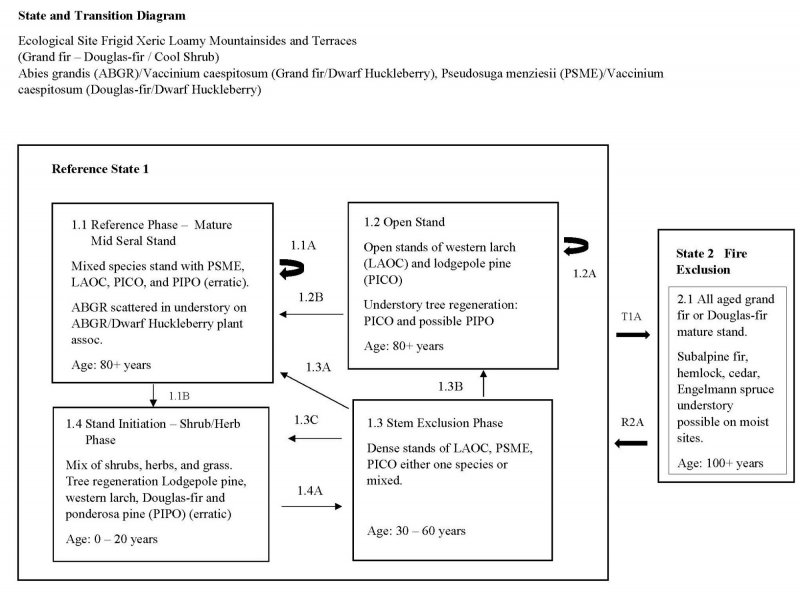
Natural Resources
Conservation Service
Ecological site F043AY532WA
Cool-Frigid, Moist-Xeric, Loamy Terraces, ashy surface (Douglas-fir-Grand Fir Cool Shrub) Douglas-fir-grand fir/low huckleberry-big huckleberry-dwarf huckleberry
Last updated: 10/14/2020
Accessed: 12/21/2025
General information
Provisional. A provisional ecological site description has undergone quality control and quality assurance review. It contains a working state and transition model and enough information to identify the ecological site.
MLRA notes
Major Land Resource Area (MLRA): 043A–Northern Rocky Mountains
Major land resource area (MLRA): 043A-Northern Rocky Mountains
Description of MLRAs can be found in: United States Department of Agriculture, Natural Resources Conservation Service. 2006. Land Resource Regions and Major Land Resource Areas of the United States, the Caribbean, and the Pacific Basin. U.S. Department of Agriculture Handbook 296.
Available electronically at: http://www.nrcs.usda.gov/wps/portal/nrcs/detail/soils/ref/?cid=nrcs142p2_053624#handbook
LRU notes
Most commonly found in LRU 43A01 (Okanogan Plateau) and 43A02. Climate parameters were obtained from PRISM and other models for the area. Landscape descriptors are derived from USGS DEM products and their derivatives.
Classification relationships
Relationship to Other Established Classifications:
United States National Vegetation Classification (2008) – A3362 Abies grandis – Pseudotsuga menziesii Central Rocky Mountain Forest & Woodland Alliance
Washington Natural Heritage Program. Ecosystems of Washington State, A Guide to Identification, Rocchio and Crawford, 2015 – Northern Rocky Mountain Mesic Montane Mixed Conifer Forest
Description of Ecoregions of the United States, USFS PN # 1391, 1995 - M333 Northern Rocky Mt. Forest-Steppe-Coniferous Forest-Alpine Meadow Province
Level III and IV Ecoregions of WA, US EPA, June 2010 – 15r Okanogan-Colville Xeric Valleys and Foothills, 15w Western Selkirk Maritime Forest, 15x Okanogan Highland Dry Forest, 15y Selkirk Mountains.
This ecological site includes the following USDA Forest Service Plant Association: PSME/VACA, and ABGR/VACA (Williams et. al. 1995)
Ecological site concept
The Ecological site occurs on loamy mountainsides with >7 inches of volcanic ash on the surface. A water table is at >30 inches depth and available water capacity is moderate to high. Plant communities are dominated by Douglas-fir and/or grand fir with an understory composed chiefly of huckleberry (Vaccinium) species. They occur at the elevations that mark the colder end of the frigid temperature regime or in lower positions effected by cold air drainage.
Table 1. Dominant plant species
| Tree |
(1) Pseudotsuga menziesii var. glauca |
|---|---|
| Shrub |
(1) Vaccinium cespitosum |
| Herbaceous |
(1) Calamagrostis rubescens |
Click on box and path labels to scroll to the respective text.
